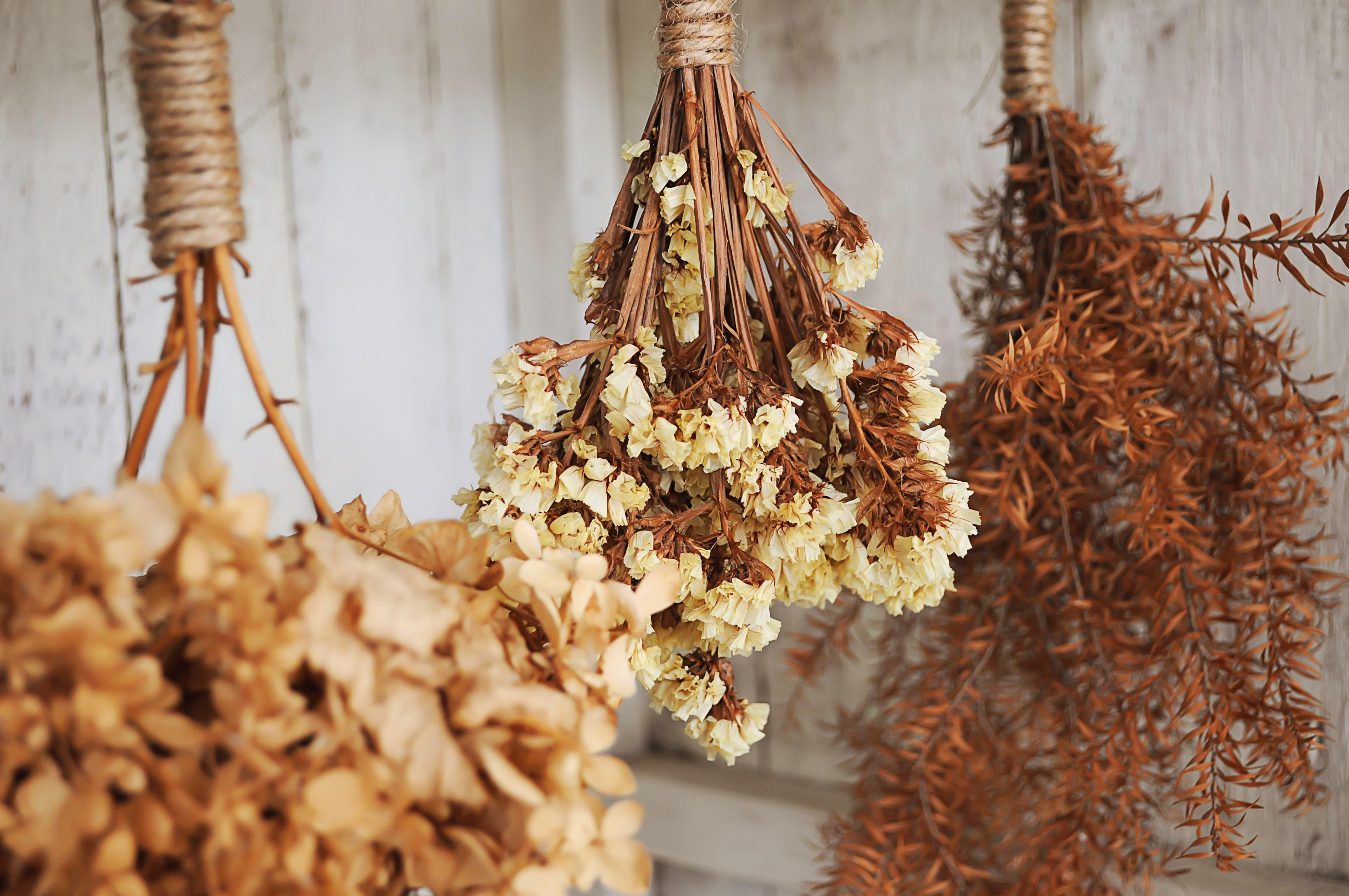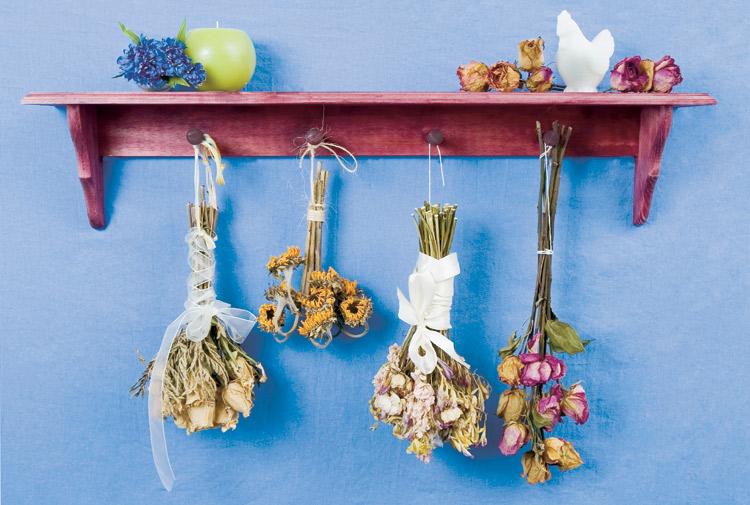Drying flowers is an ideal way to preserve your favorite blooms and create dried floral arrangements that last for years.
Drying flowers is a versatile process, dependent on your preferences and availability. Some methods take less time than others while requiring less hands-on effort.
Air Drying
If you’re creating your own wedding bouquet, a long-lasting DIY floral arrangement, or simply want to preserve some of your summer blooms for a few months, drying flowers is an easy way to preserve them.
Air-drying flowers is an ancient and widely-used technique to preserve their blooms with their stems intact. To do this, simply hang the bunch upside down in a cool, dark place to air dry.
This technique works best with whole bouquets and robust flowers like roses, lavender, hydrangea, larkspur, statice, celosia and baby’s breath. You may even try it on roadside wildflowers like tansy, sea holly and bachelor’s buttons.

Silica Gel
Silica gel is an ideal choice for drying flowers, as it’s simple and effective at preserving your blooms. You can use it on a range of flowers such as roses, bachelor buttons and zinnias with great success!
Florists use silica gel, which comes in packets and can be purchased from most craft stores. These packets contain both small blue indicating crystals and larger white silica gel crystals that will absorb moisture from petals.
Once the crystals have absorbed all of the water from your flowers, they will turn pink. To recharge silica gel with new crystals, place on an open pan inside a 250 degree F oven for around five hours.

Oven Drying
Dried flowers offer a versatile solution and bring long-lasting floral beauty to your home. You can use them for crafting projects like wreaths and crafts, as well as in creating salves, tinctures and healing pastes.
Oven drying is an efficient method for delicate flowers that need to be dried quickly. However, ovens can be unpredictable so it’s essential to check them frequently.
To dry flowers in the oven, cut off the stems of your blooms and place them on an oven rack. Bake them at 150 to 200 degrees Fahrenheit for approximately an hour.
Weighting Between Paper
If you want your flowers to dry completely, apply considerable pressure. Use a board, stack of phonebooks, bricks or something else that’s flat and heavy in order to press out all moisture from them.

Once your flowers are prepped, place them between two sheets of absorbent paper. You can use coffee filters, parchment paper, printer paper, thin cardboard or untreated facial tissue; however, avoid using textured paper towels since these may leave imprints on the petals when dried.
Next, place a paper-weight on top of your blooms and then attach an ironing board ($15 at Target) directly on top. The hot steam from the ironing board will help remove water from your petals quickly, allowing them to dry much faster.
Microwave Drying
If you need to dry flowers quickly, the microwave can be an easy option. Just be sure to do it correctly or your blooms may discolor or become misshapen during the process.
This method works best with thin, flat blooms like pansies or daisies. To use this technique, place your blossoms between two non-metallic ceramic tiles and heat for 30 to 60 seconds at a time.
You can also place the flowers inside a book and press them between pages. Repeat this process, checking the petals until they’re dry.
Another speedy drying method is to place the flower in a container covered with silica gel. Silica gel helps preserve the color and shape of your petals, making it perfect for craft projects like resin crafts or potpourri.
